List of Authors
>>About this blog
Recent blog post
|
[Sam]
July 29, 2017 16:00
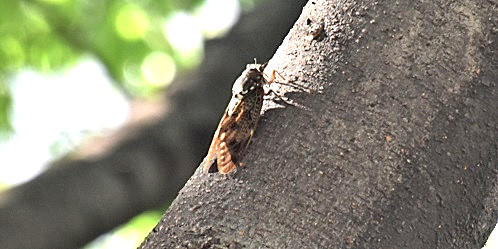
 Following "Minminzemi" on July 23, on July 28, one of the Japan Meteorological Agency's biological seasonal observation information, "Tokyo Regional Abrazemi Hatsune" was reported. Following "Minminzemi" on July 23, on July 28, one of the Japan Meteorological Agency's biological seasonal observation information, "Tokyo Regional Abrazemi Hatsune" was reported.
It is 4 days later than normal and 15 days later than last year.
After the squeal starts to squeal, "Gijijijiji ..." and "Gijijiri ..." and finish squealing with "Jijijijiji ..." .
There seem to be various theories about the origin of the name, such as the wing reminiscent of oil paper and the squeal resembles the sound of repellent when the oil is heated.
The body is black-brown, the white belt on the back, the limbs and compound eyes are brown, and the wings are opaque brown, which is rare for cicadas.
Abrazemi at Tsukuda Park, a sound that amplifies the heat, but along with kaempfer cicada announcing the end of the rainy season and Tsukutsukuboshi in late summer, Minminzemi and Abrazemi, which represent the midsummer, are also seasonal features.
[Sam]
July 25, 2017 16:00
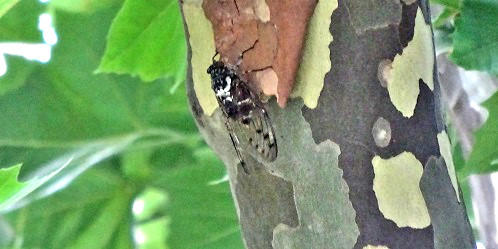
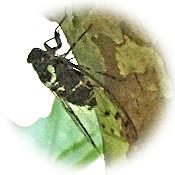
On July 23, one of the Japan Meteorological Agency's biological seasonal information, "Tokyo District Minminzemi First Sounding", was reported.
It is said that two days later than normal and three days later than last year.
As the name implies, it is known for its powerful squeal for the size of the body, "Menminminminminminminminminminminminminminmin ...", and it is often heard as "sound effects during the summer."
It is characterized by a series of dark crests on transparent wings, black body color and blue-green patches.
The squealing is exclusively male, but the male and female of the individual can be identified by differences in the structure of the abdomen.
Females have a long and narrow spawning tube at the tip, and males are said to play a role in rhythmic and inflection of squeals.
Even at Tsukuda Park, Minminzemi's "Cicada Toki Rain" tells the summer performance.
When the sound is over, the habit of "squealing and moving" that jumps to other trees (branches) without gaping is also noticeable.
[Sam]
July 24, 2017 18:00
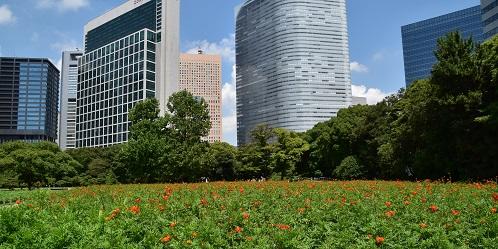
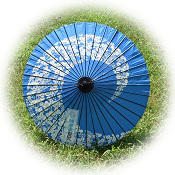 On July 19, the rainy season has ended in the Tokyo region, and the intense heat continues every day. On July 19, the rainy season has ended in the Tokyo region, and the intense heat continues every day.
The heat stroke Zero Project, promoted by the Japan Meteorological Association, was launched in cooperation with the Tokyo Metropolitan Park Association during the summer season from July 21 to September 18 at eight metropolitan parks in Tokyo.
This project aims to reduce the number of people affected by heat stroke and reduce the number of deaths to zero, and calls for more aggressive measures against heat stroke, centered on the transmission of weather information, which has a significant impact on the outbreak.
There are 11 types of Japanese umbrella designs in total. You can enjoy different designs for each garden, and the logo mark "heat stroke Zero" is distributed in Japanese style.
There are two types of Japanese umbrellas in the Hamarikyu Onshi Garden: blue pattern and plain green.
In the flower garden, I heard that Kibana Cosmos, which began to bloom from the beginning of this month, is expected to be in full bloom at the end of this month.
[Sam]
July 22, 2017 16:00
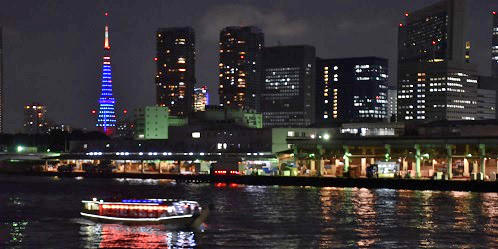
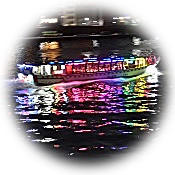 On the evening of July 19, when strong sunlight fell in the morning and the Japan Meteorological Agency announced that "Tokyo (Kanto Koshin region) is likely to have started the rainy season," Tokyo Tower will tell Tokyo about the arrival of summer from sunset to 23:00. On the evening of July 19, when strong sunlight fell in the morning and the Japan Meteorological Agency announced that "Tokyo (Kanto Koshin region) is likely to have started the rainy season," Tokyo Tower will tell Tokyo about the arrival of summer from sunset to 23:00.
The rainy season ended two days earlier than normal and ten days earlier than last year.
Finally, the summer season will begin, which is covered by full-fledged summer high pressure and the harsh heat continues.
The light-up consists of three colors: red, which represents "sun" at the tip of the observation deck, blue, blue, and green, which represents "green" at the bottom of the observation deck, and red blue, green.
From the Sumida River Terrace in Kachidoki, you can see a sharp shine through Tsukiji Market.
[Sam]
July 20, 2017 09:00
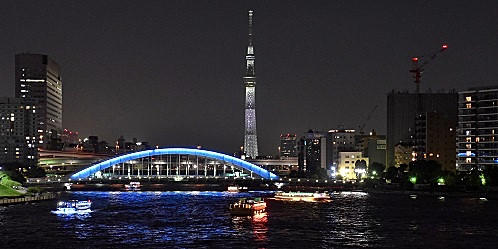
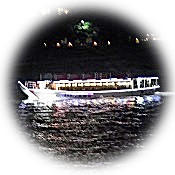
In Tokyo, midsummer days of over 30 ° C continue from July 5 to 15.
During the rainy season, 11 consecutive midsummer days were the first in history.
It's already severe heat and it's near summer production.
The Sumida River has long been deeply involved with people's lives as a place for relaxation as an artery of water transportation that supports the economy of Edo.
The cruising, which is blown by the pleasant breeze of the water surface, forgets the hustle and bustle of the daytime, and spends a fantastic evening, is a summer tradition.
The cool-down boat season is finally coming.
The number of houseboats and cruisers passing through the Sumida River also increases, and the lights of the illuminations, the lights of bridges, the lights of the riverbank, etc. are reflected in the river surface, creating a unique color feeling.
On this day (15th), the Tokyo Sky Tree illuminated from 19:00 to 20:00 is designed to illuminate the LED lighting fixtures in white at the maximum brightness, shining brightly, and observation deck's red accents.
    
[Sam]
July 18, 2017 12:00
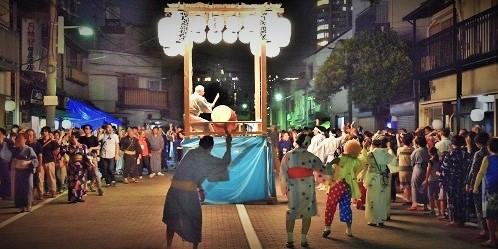
 The annual "Tsukuda Island Bon Odori" is held every year for three days from July 13 to 15 around the tower set in the center of "Wataba-dori" at Tsukuda 1-chome. The annual "Tsukuda Island Bon Odori" is held every year for three days from July 13 to 15 around the tower set in the center of "Wataba-dori" at Tsukuda 1-chome.
It is one of the sea village folk performing arts that has been handed down in the Tsukuda area since ancient times.
It is said that the tradition origin of Bon Odori was performed at the Yulan Bonkai, the year of completion of the reconstruction of Tsukiji Honganji Temple in Tsukiji.
Today, when it comes to Bon Odori, the religious implications are diminished, and as a local event, the lively and vibrant 'Noryo Bon Dance Festival' is the mainstream, but Tsukuda Island Bon Dance, which has been handed down to this day, is a quiet rhythm and mouthful of Japanese lantern, which is decorated in a turret.
Lanterns are also displayed on the eaves of the surrounding houses, and the location of the "Unrelated Buddha (Spirit shelf)" set up in front of the "Tsukuda Machikado Exhibition Hall" near the Sumida River is a folk religion that has been inherited. I feel again in the spirit of 'memorial' memorial service'.
On the last day, dancers can be seen in costumes that elaborate their own tastes.
This year again, the tasteful voice color of Tsuneo Iida, who takes the lead, and Kazuharu Yamada, representative of the Tsukudajima Bon Preservation Society, and the musical accompaniment with "Cola, Yatse, Yoyana, Korashoi" returned by the dancer. .
|
Links
|

 Following "Minminzemi" on July 23, on July 28, one of the Japan Meteorological Agency's biological seasonal observation information, "Tokyo Regional Abrazemi Hatsune" was reported.
Following "Minminzemi" on July 23, on July 28, one of the Japan Meteorological Agency's biological seasonal observation information, "Tokyo Regional Abrazemi Hatsune" was reported.


 On July 19, the rainy season has ended in the Tokyo region, and the intense heat continues every day.
On July 19, the rainy season has ended in the Tokyo region, and the intense heat continues every day.
 On the evening of July 19, when strong sunlight fell in the morning and the Japan Meteorological Agency announced that "Tokyo (Kanto Koshin region) is likely to have started the rainy season," Tokyo Tower will tell Tokyo about the arrival of summer from sunset to 23:00.
On the evening of July 19, when strong sunlight fell in the morning and the Japan Meteorological Agency announced that "Tokyo (Kanto Koshin region) is likely to have started the rainy season," Tokyo Tower will tell Tokyo about the arrival of summer from sunset to 23:00.







 The annual "Tsukuda Island Bon Odori" is held every year for three days from July 13 to 15 around the tower set in the center of "Wataba-dori" at Tsukuda 1-chome.
The annual "Tsukuda Island Bon Odori" is held every year for three days from July 13 to 15 around the tower set in the center of "Wataba-dori" at Tsukuda 1-chome.
